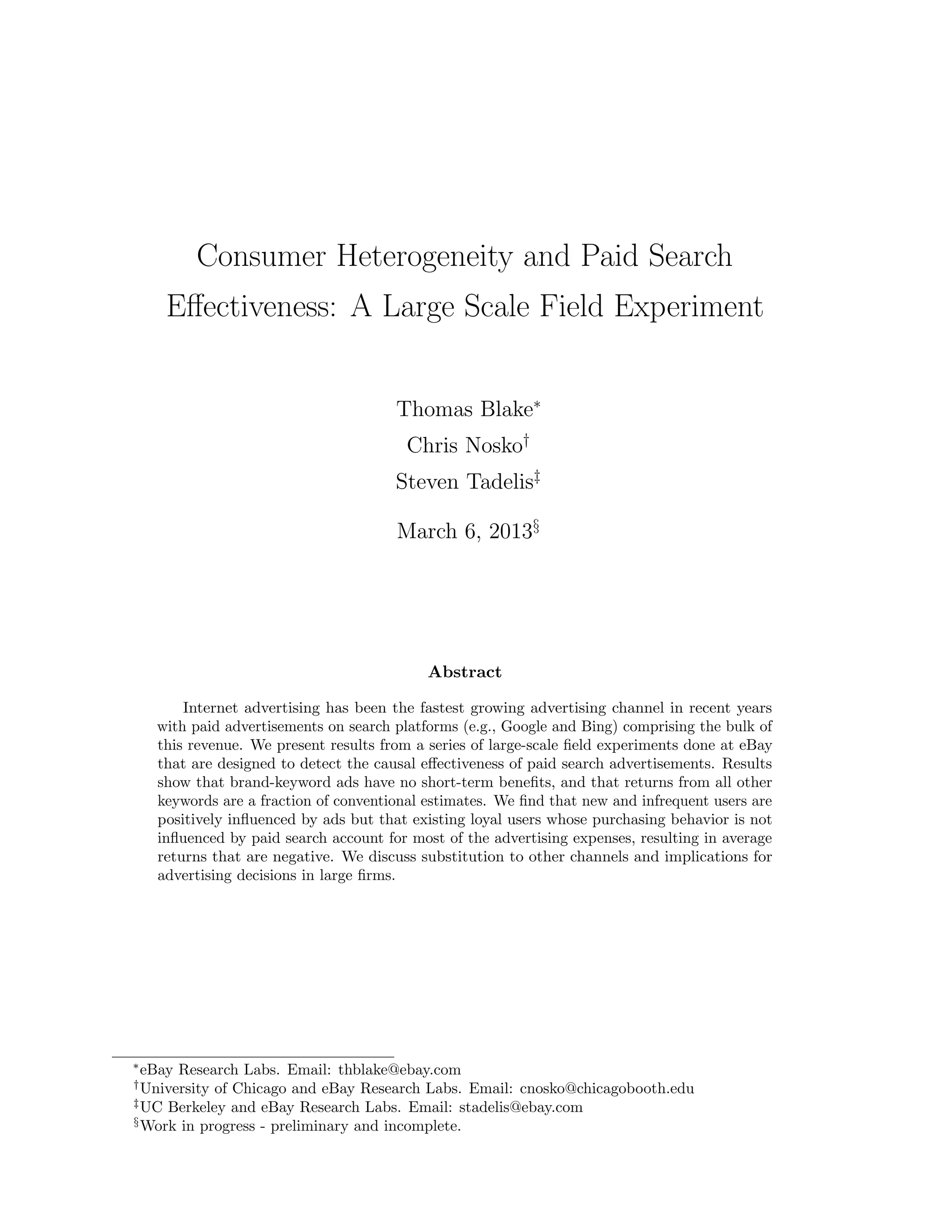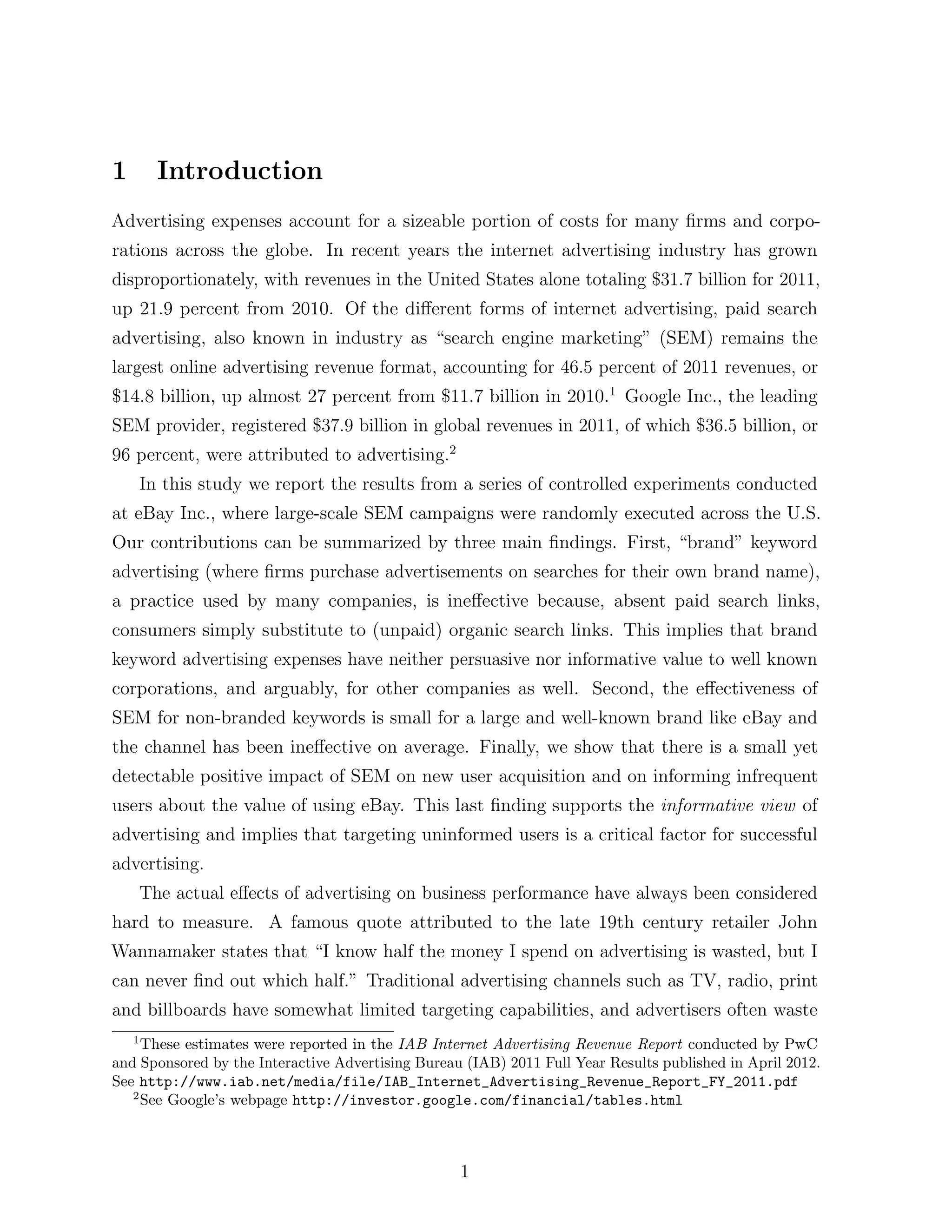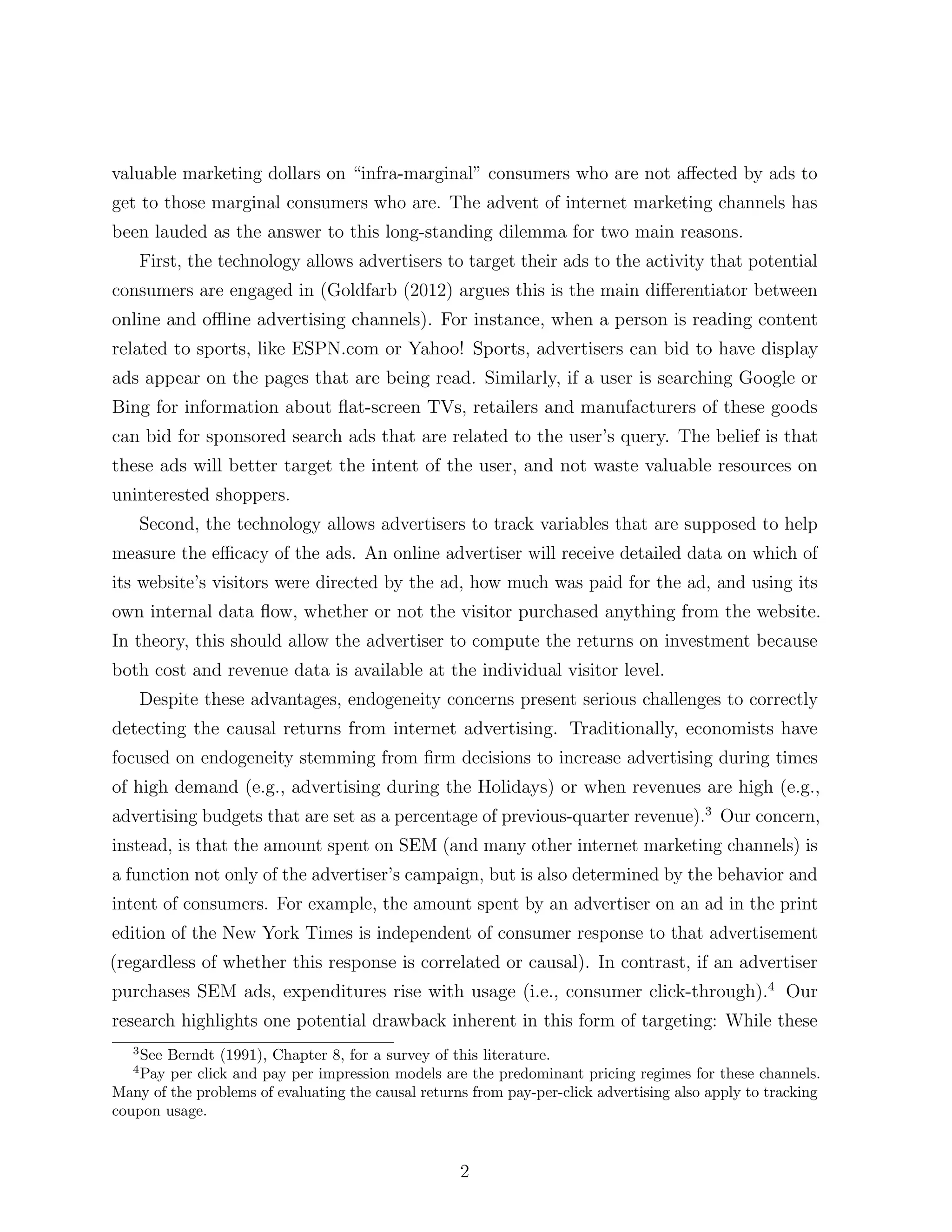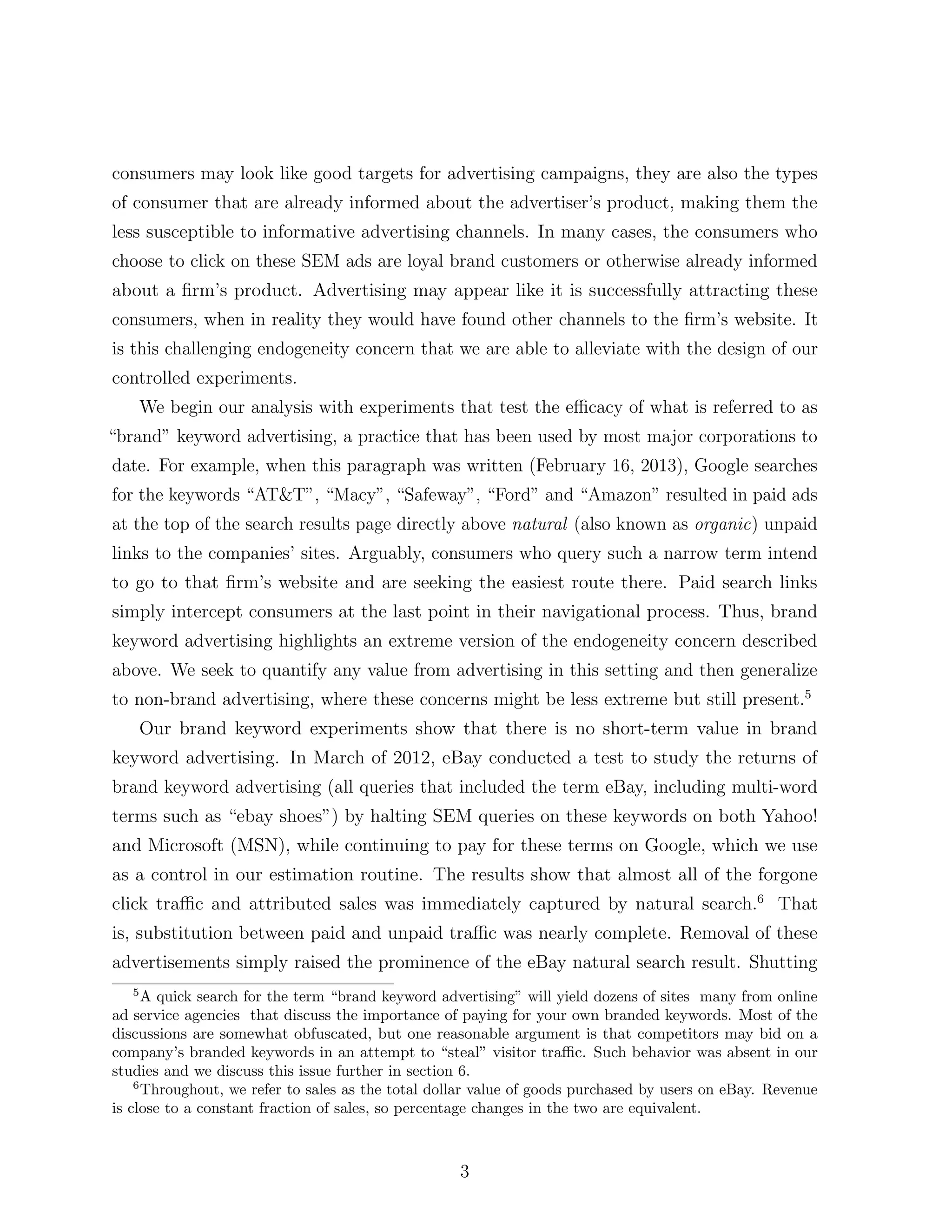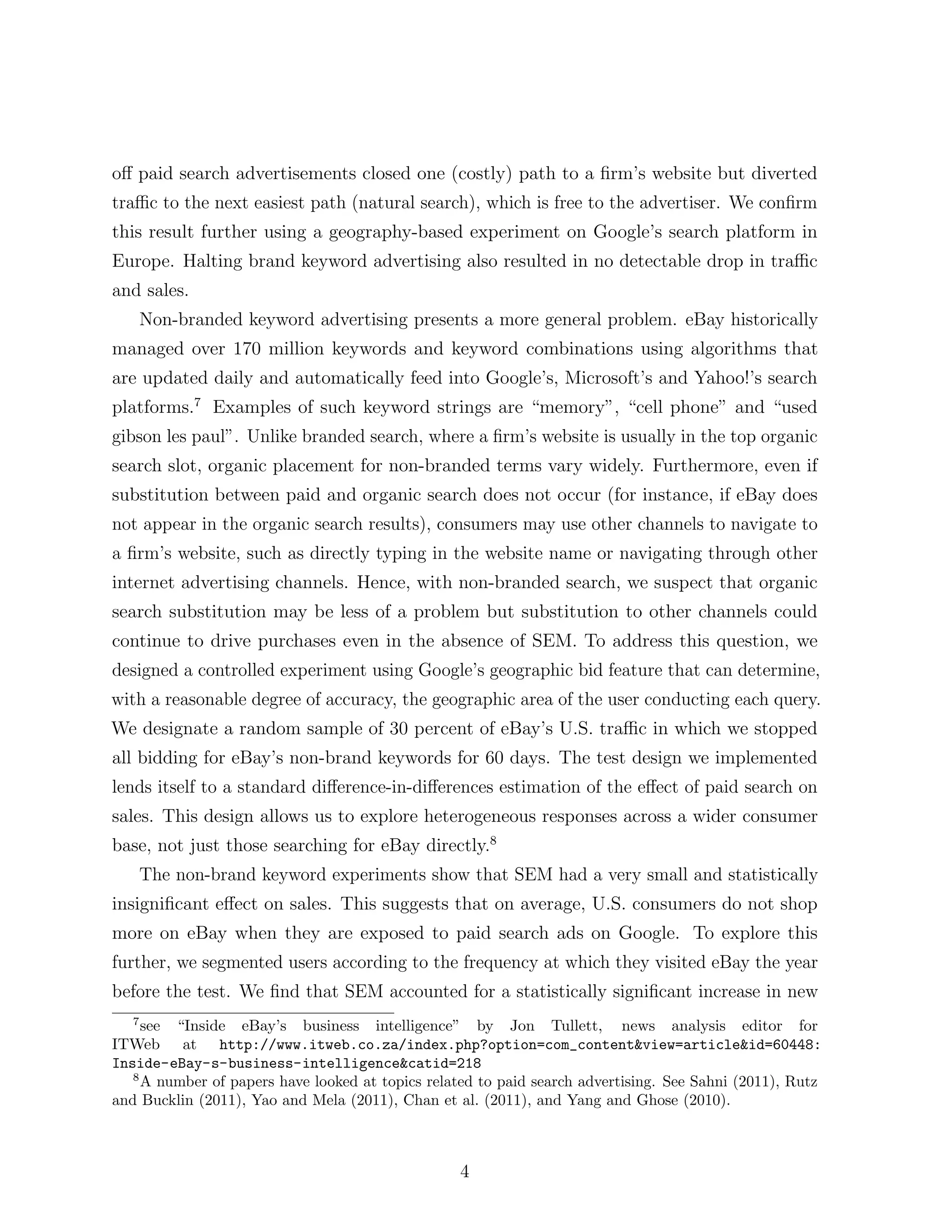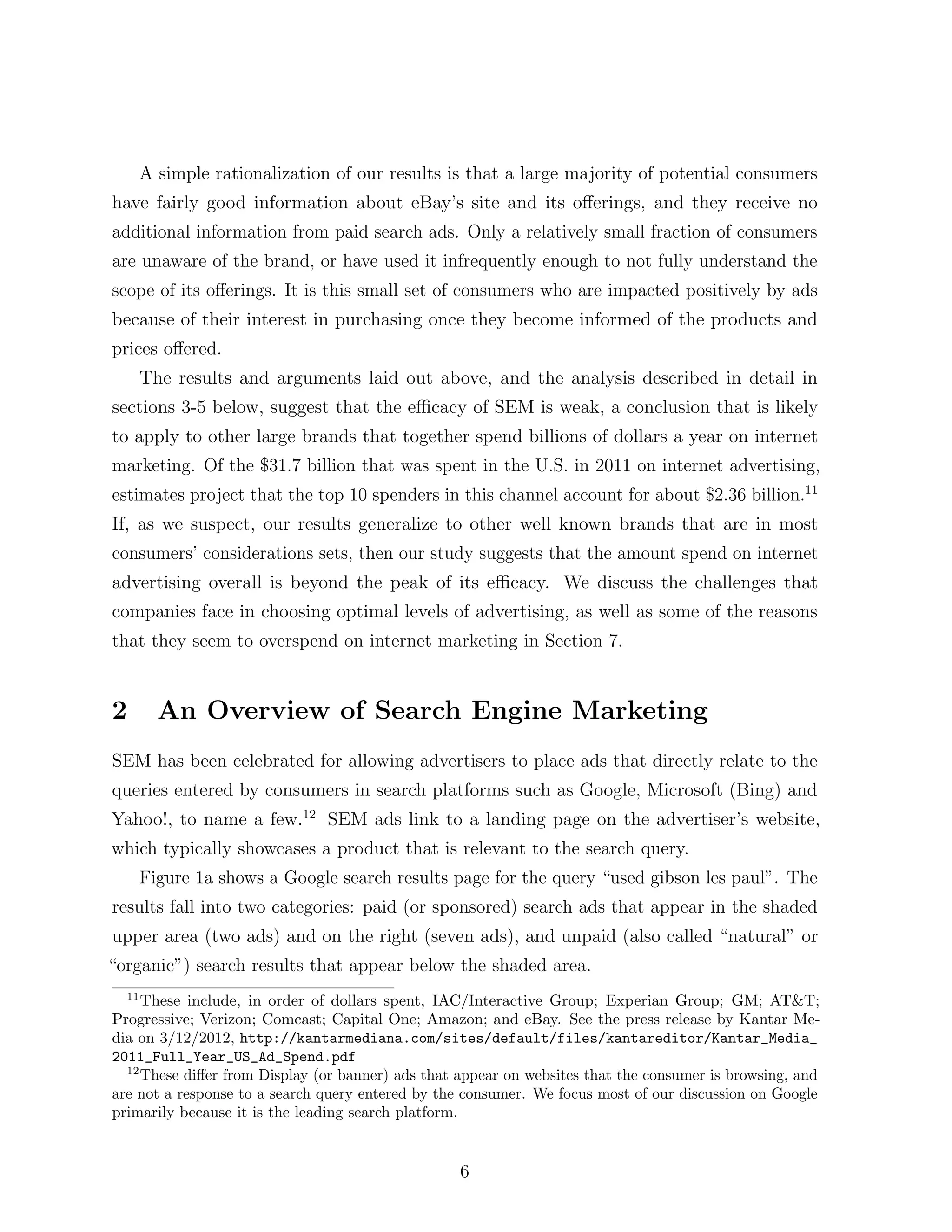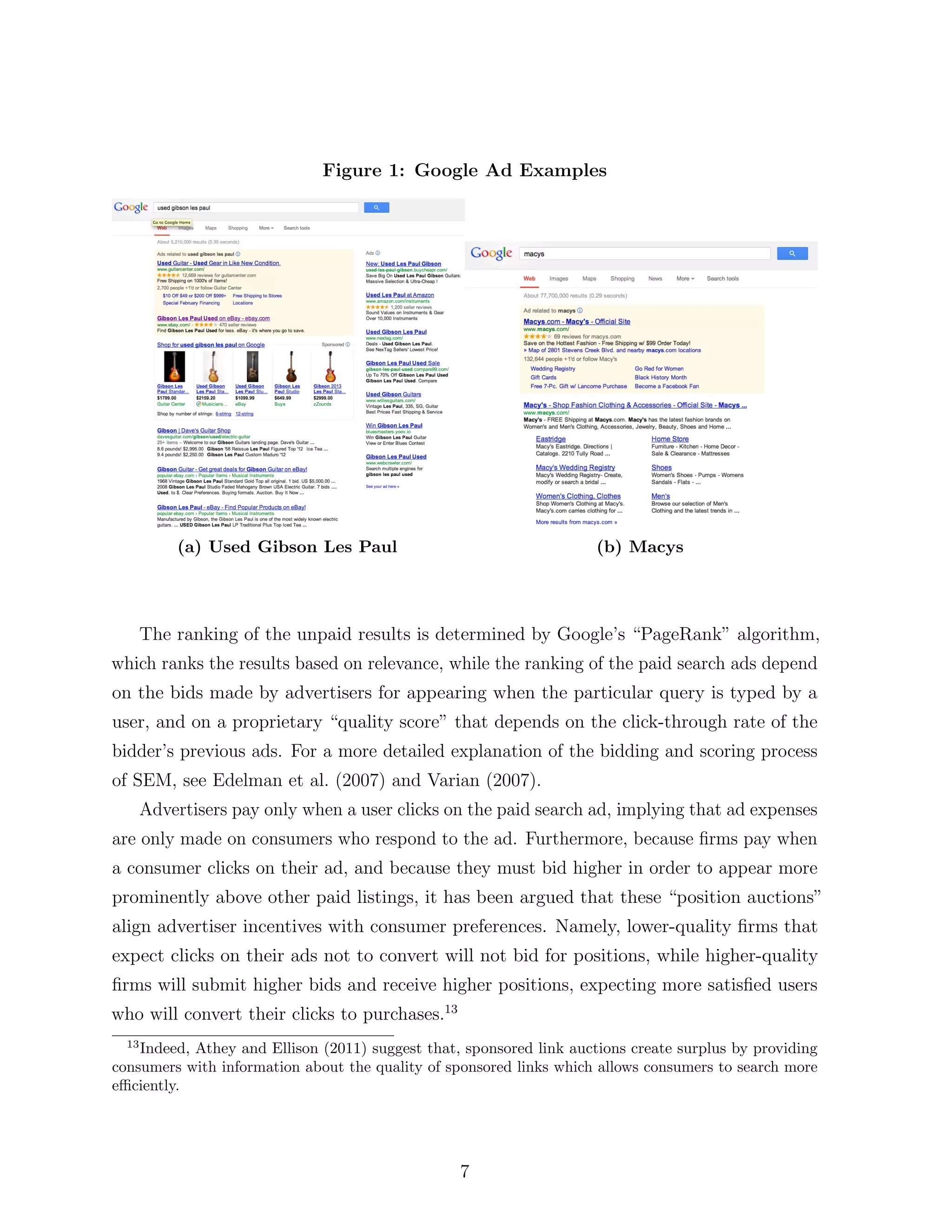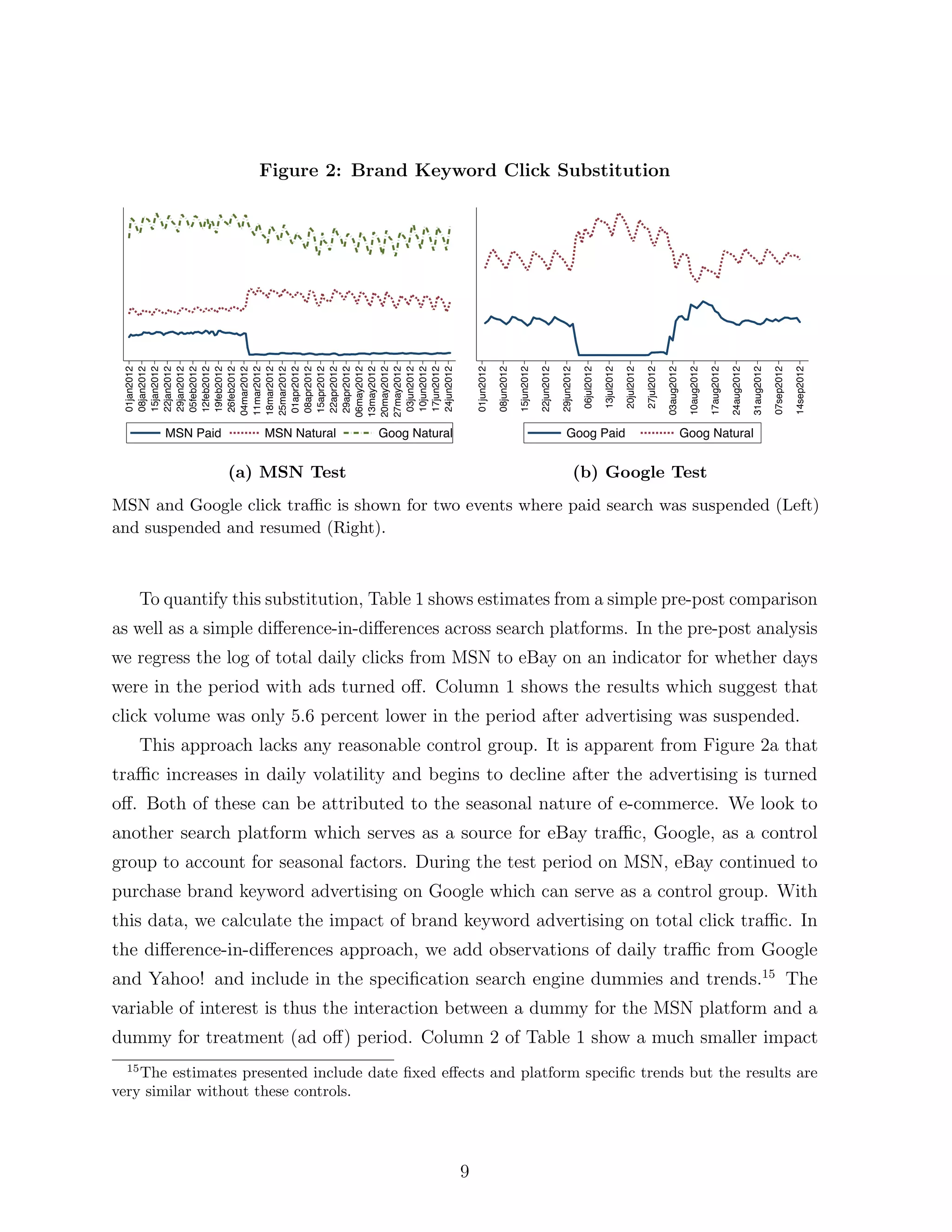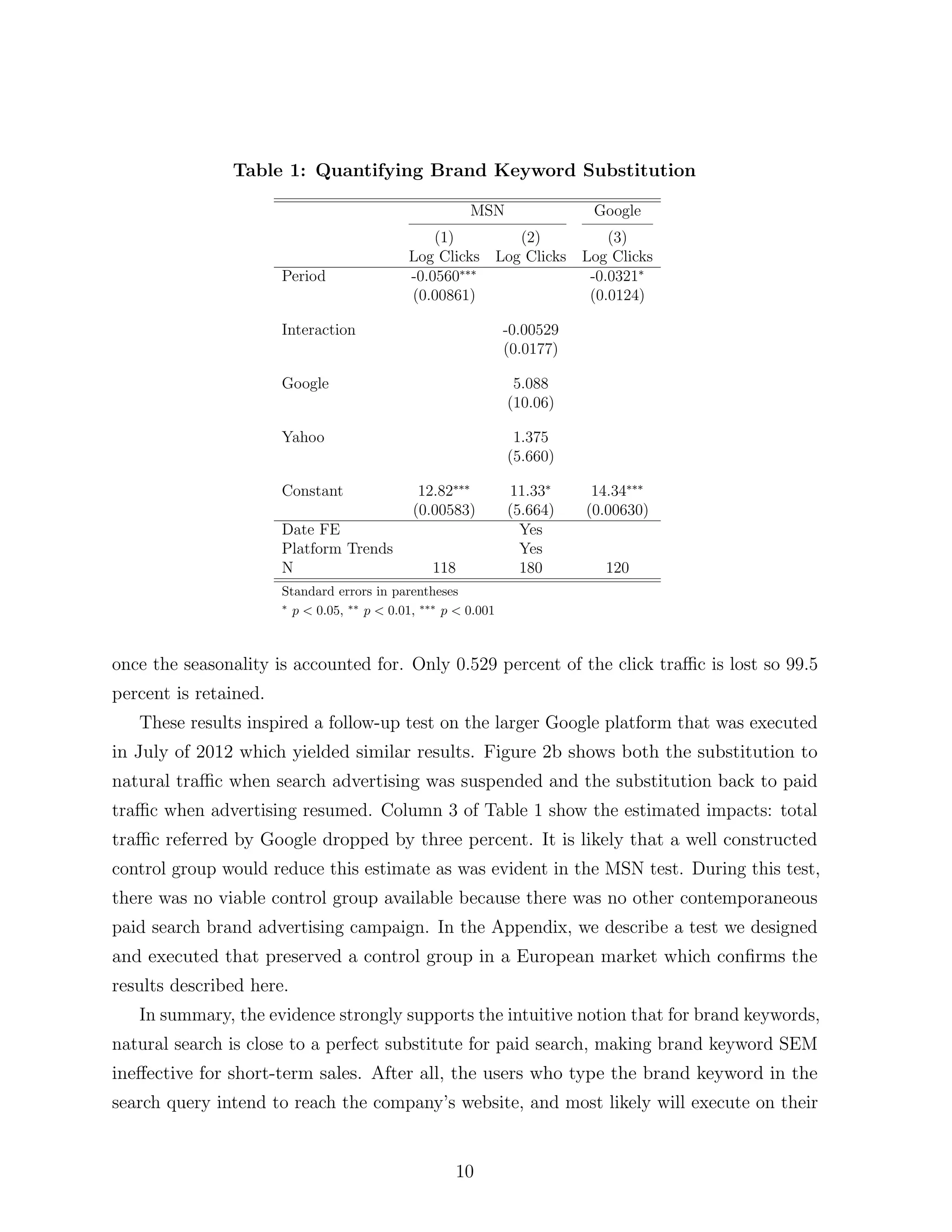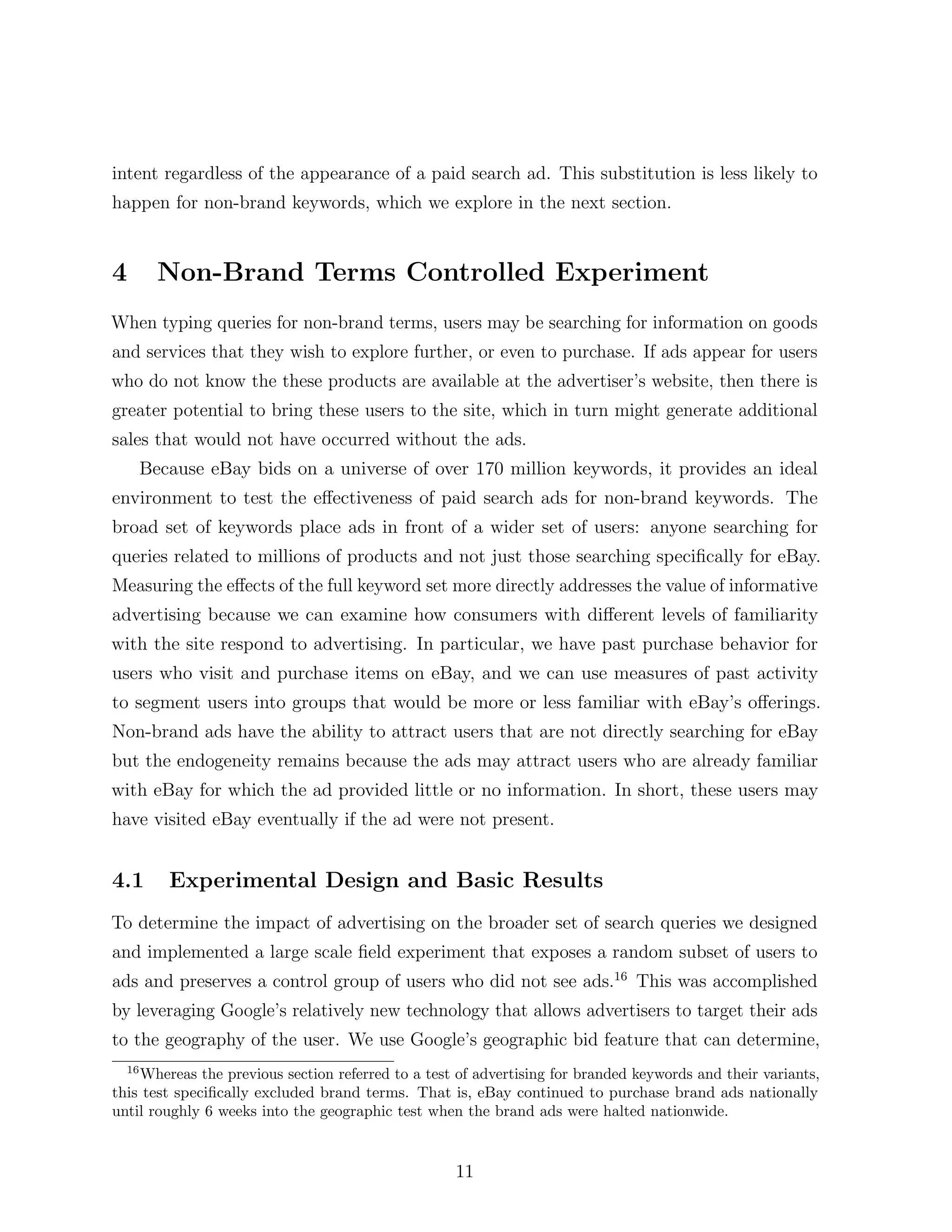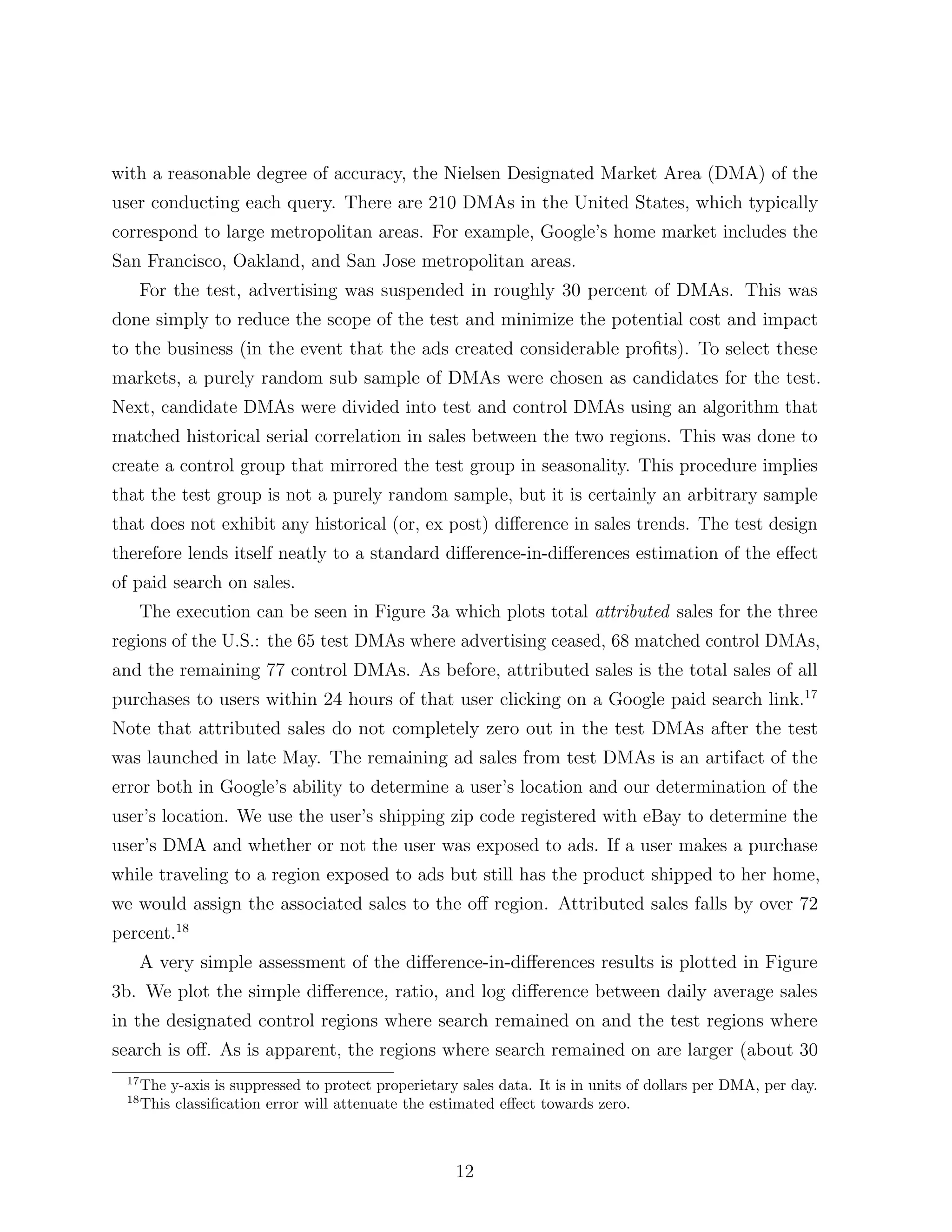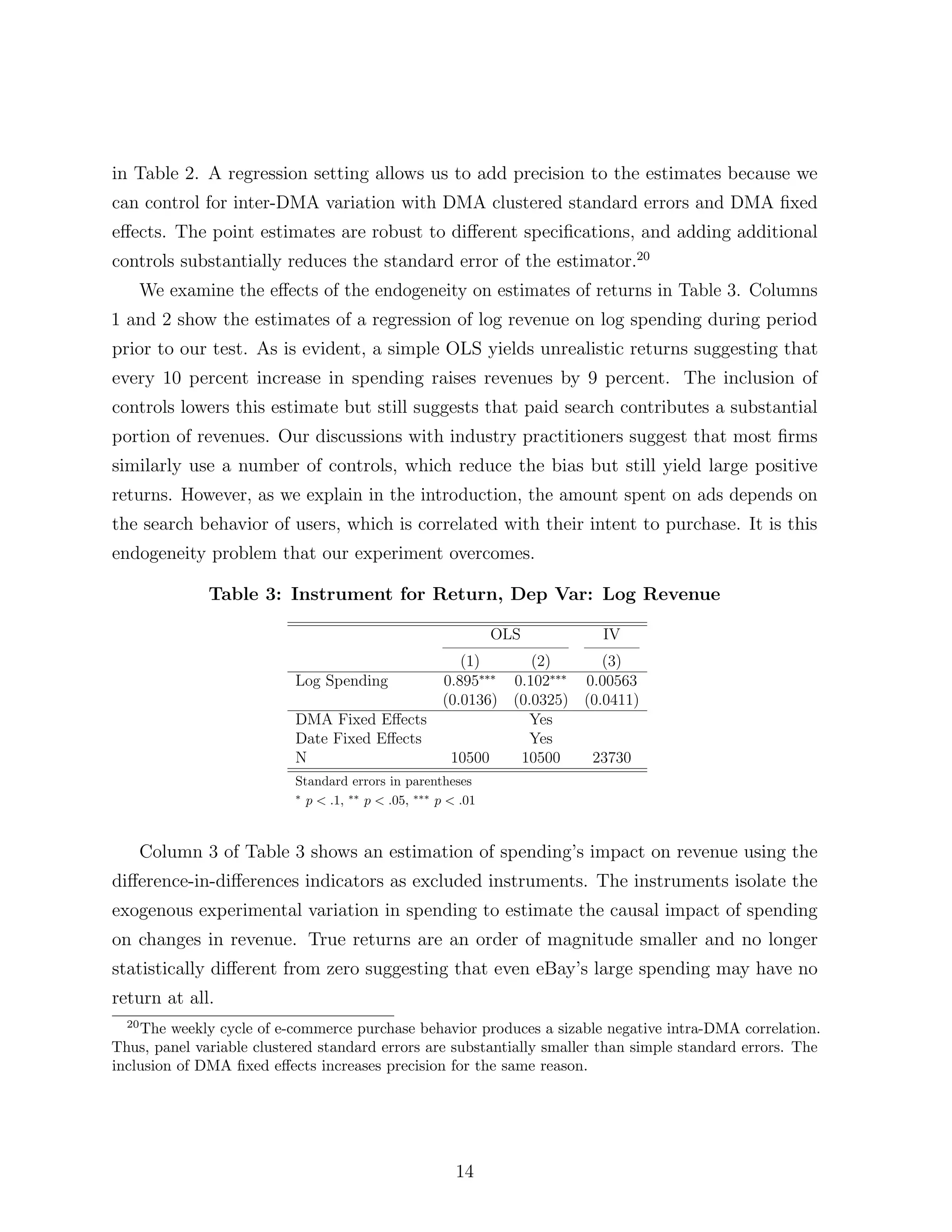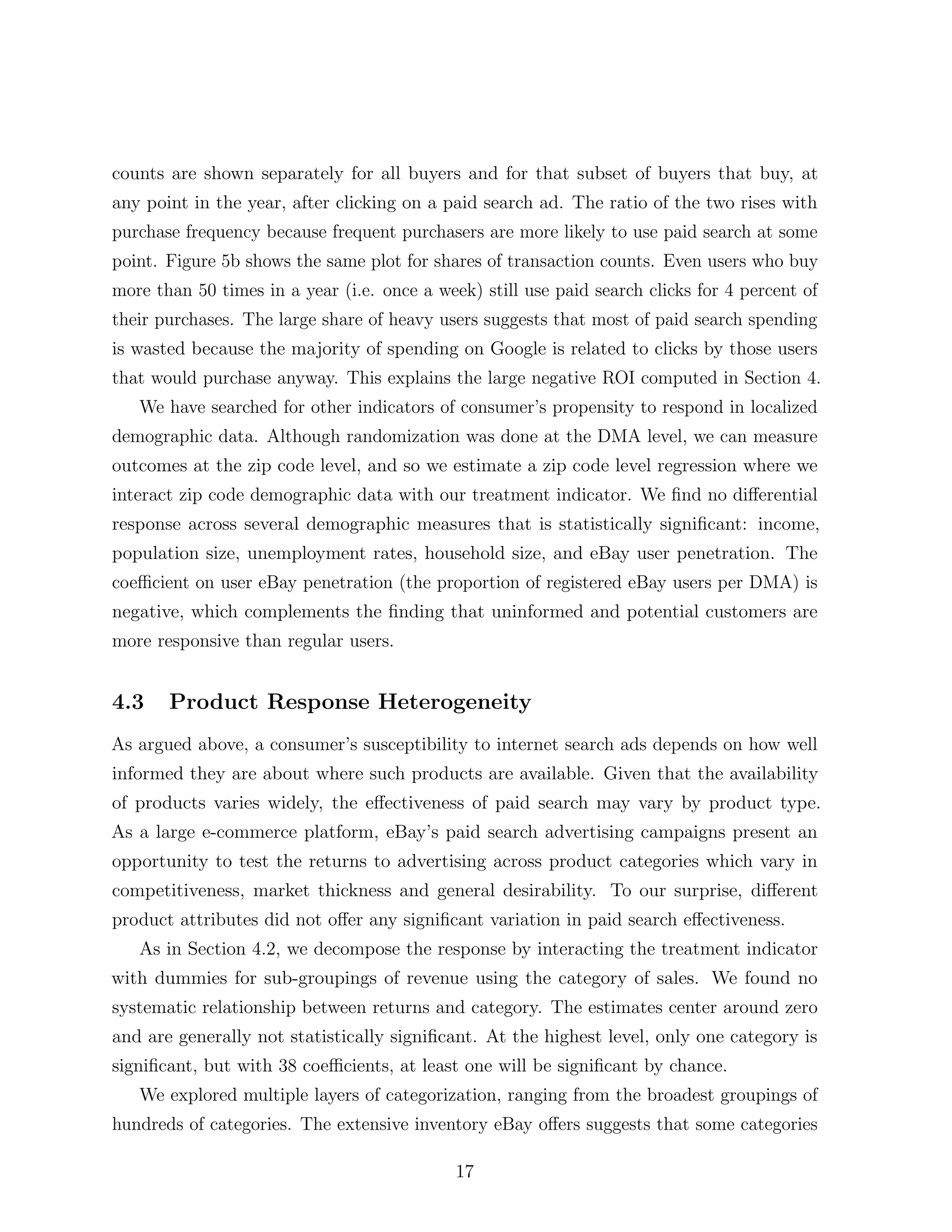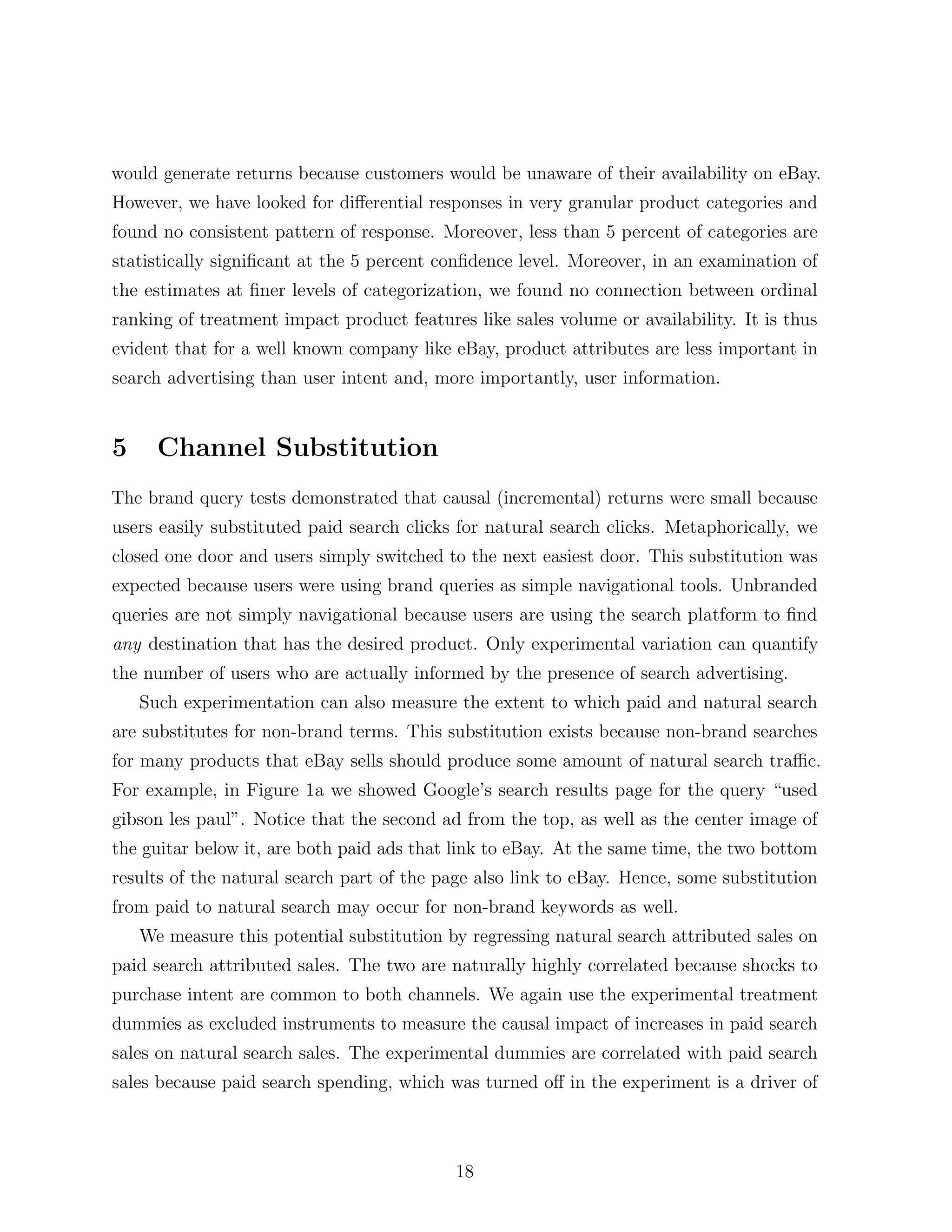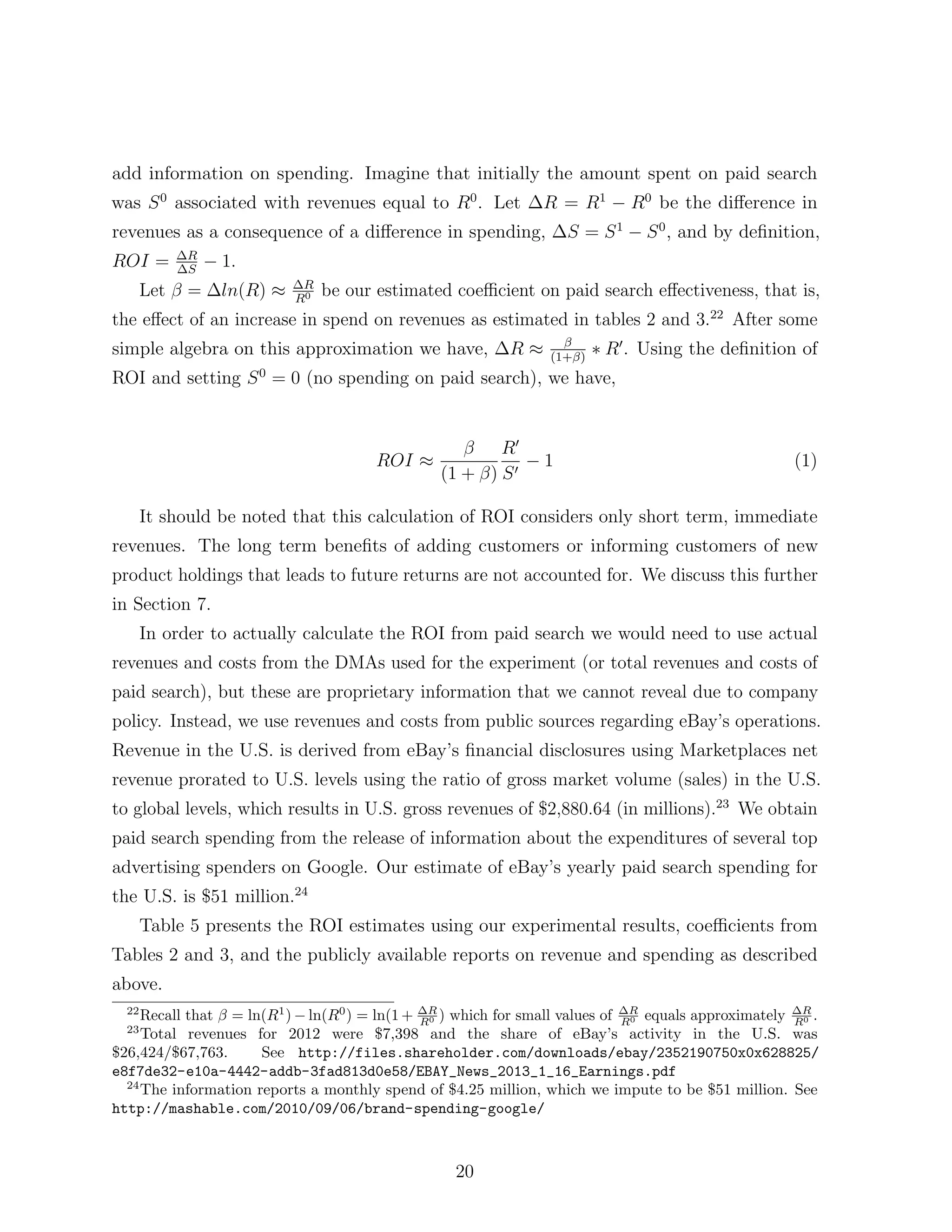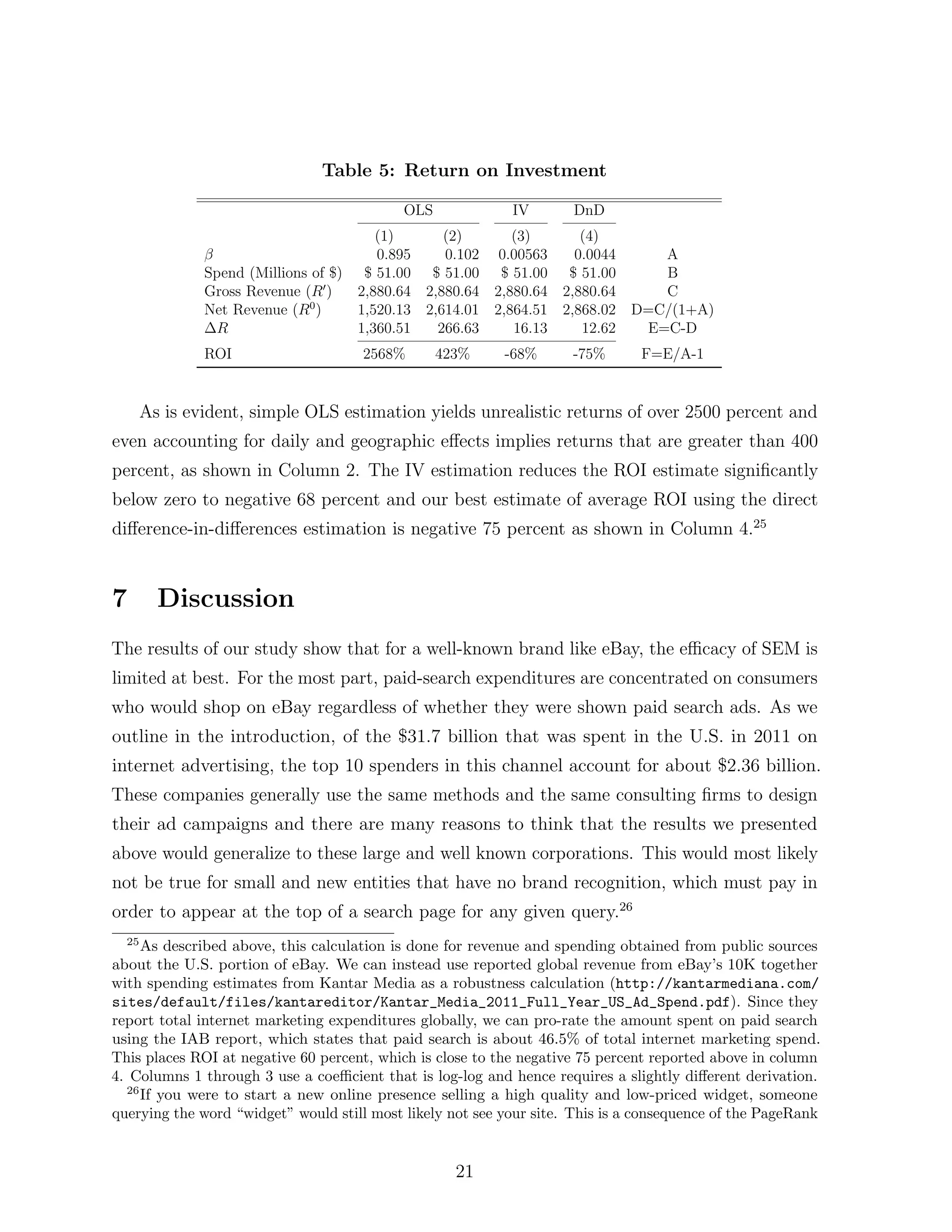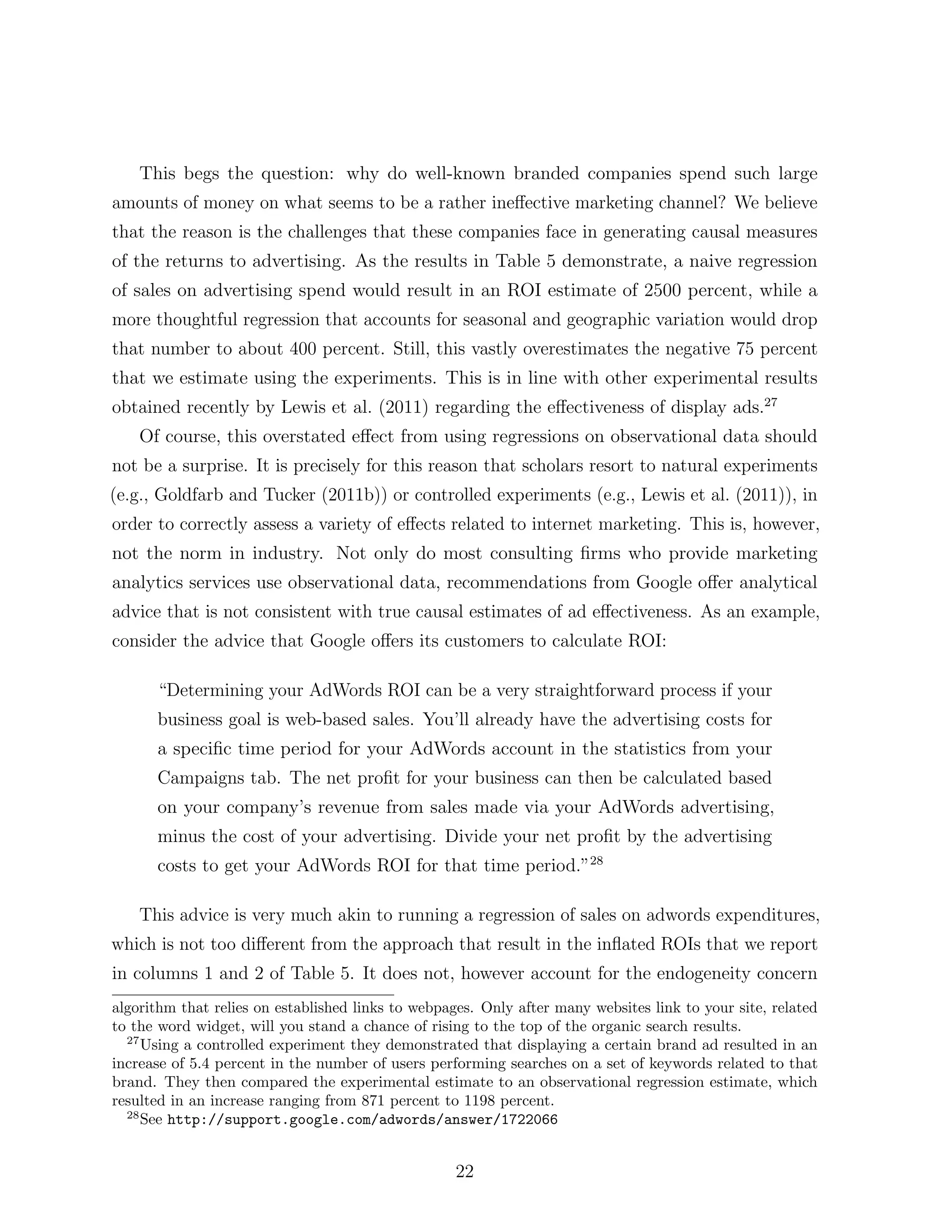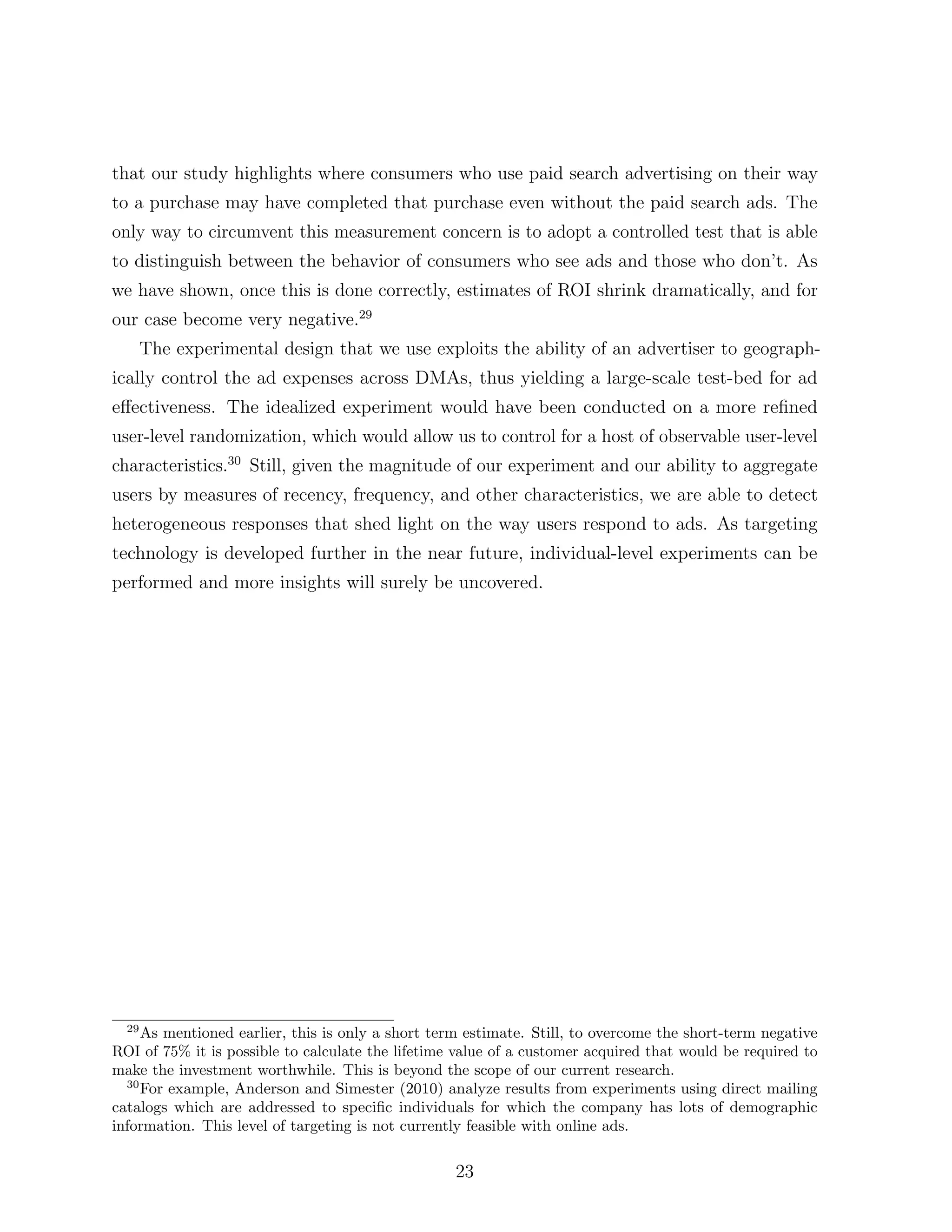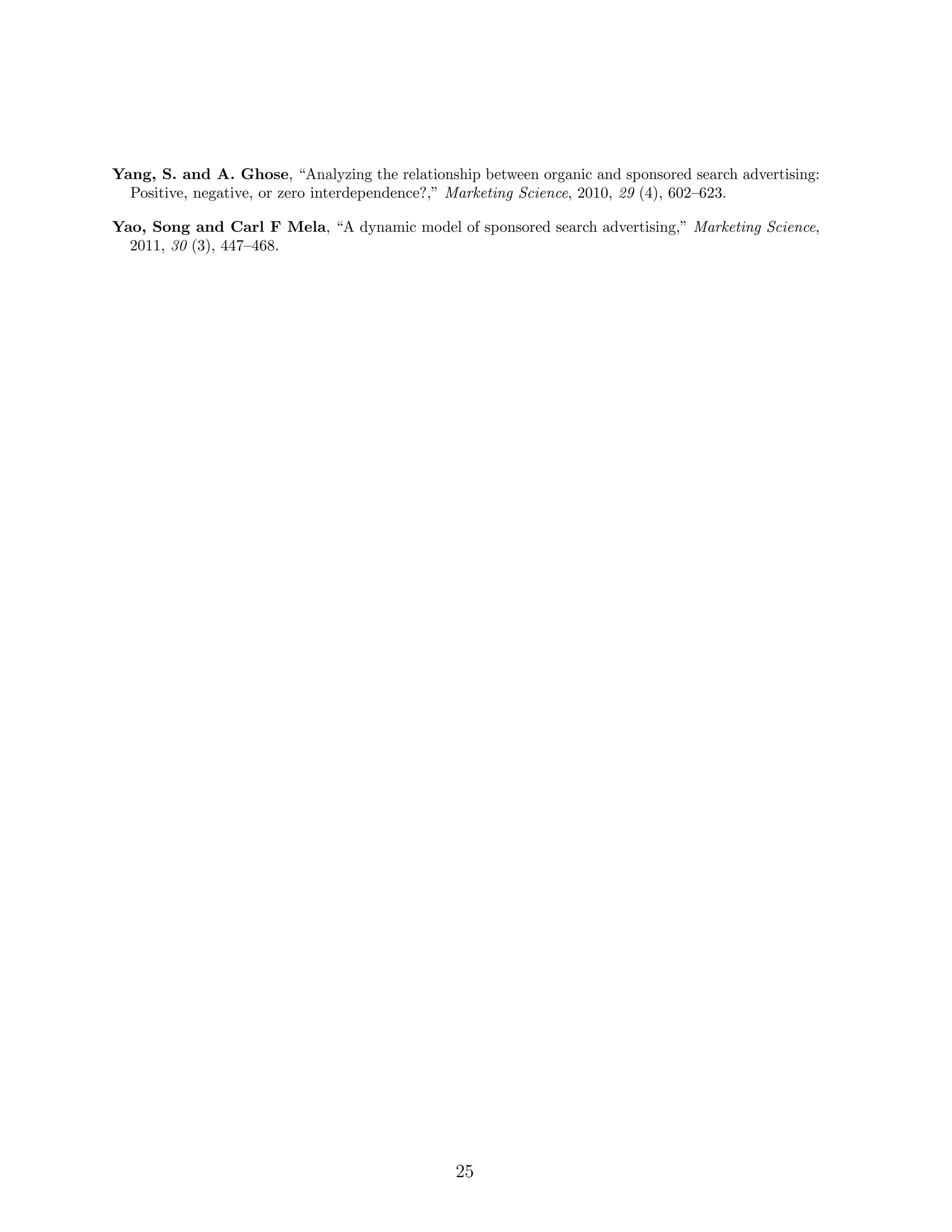This document summarizes research from a large-scale field experiment conducted by eBay on the effectiveness of paid search advertising. The study tested the impact of brand keyword advertising and non-branded keyword advertising. The results show that brand keyword advertising had no short-term benefits and almost all traffic and sales were captured by natural search when these ads were removed. For non-branded keywords, paid search advertising only had a small positive effect on new users and infrequent buyers, but no significant impact on more frequent buyers who account for most sales. On average, the returns from paid search advertising were negative for eBay.
